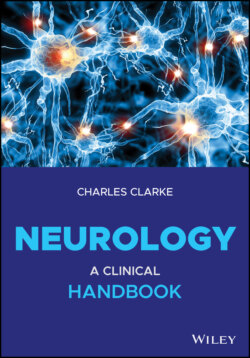Читать книгу Neurology - Charles H. Clarke - Страница 30
2 Movement, Sensation and The Silent Brain
ОглавлениеAnatomical complexities of the nervous system became apparent in the late nineteenth century. Highlights were the pathways described by Santiago Ramón y Cajal in the 1890s and later the cortical mapping by Brodmann and the work of Alf Brodal. However, remarkably little neuroanatomy was required to practice sensibly and safely. To an extent this remains so. The neuroanatomy here is in excess of the needs of most general neurologists but further study is essential in many aspects of neuroscience.
First, here is an overview of the motor and sensory pathways of the brain and cord – the basic wiring that must be understood. I deal with this largely as illustrations. I also summarise what I call the Silent Brain, vital but less obvious – regions such as the thalamus. Cortical function is dealt with in Chapter 5. For neurones, nerves, glia and myelin see Chapter 10. Chapter 13 deals with the cranial nerves. Neuro‐ophthalmology is in Chapter 14, Neuro‐Otology in Chapter 15 and the autonomic nervous system in Chapter 24.
The overall anatomy of the brain is illustrated in Figure 2.1
